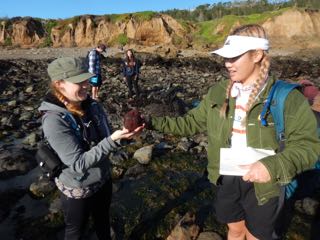
-
| 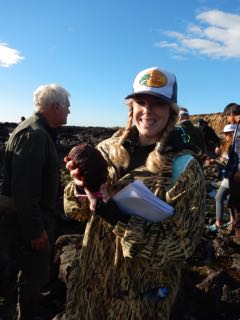
-
| 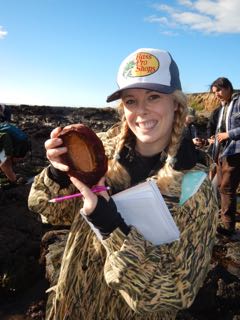
-
|
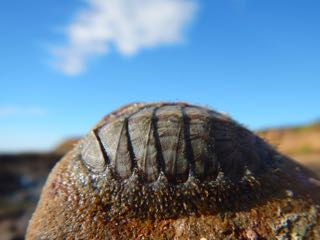
Mopalia lignosa (woody chiton) from under rock
| 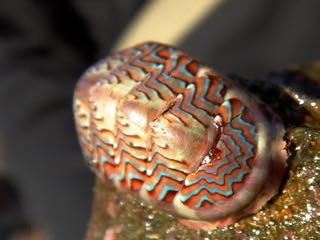
Tonicella lokii (Loki's lined chiton) is a specialist grazer on encrusting coralline algae.
| 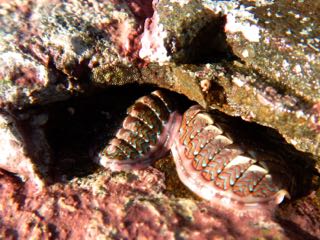
Two other Tonicella lokii found together with the last one.
|
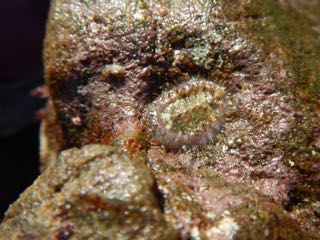
A juvenile Placiphorella velata
(veiled chiton), which is known for its ambush predation -- it raises its anterior girdle margin and traps and eats unfortunate prey that swim underneath, perhaps seeking cover.
| 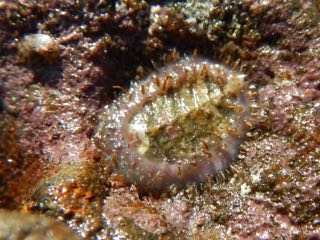
-
| 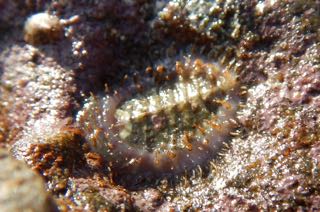
-
|
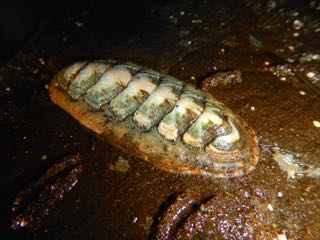
The cell lineage fate of embryos for Stenoplax heathiana (Heath's chiton) was studied extensively as part of a Ph.D. thesis by Harold Heath, completed in 1899.
When he studied it was known as Ischnochiton magdalenensis, which S. Stillman Berry later considered to be a separate, more southern, species
(as Stenoplax magdalenensis). In the same 1946 paper, Berry named the central Californian species, Stenoplax heathiana, to honor Dr. Heath's many accomplishments.
| 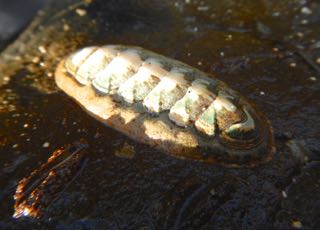
-
| 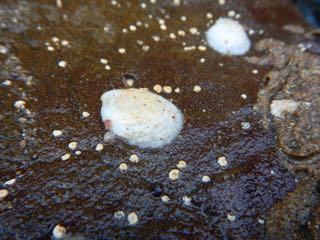
-
|
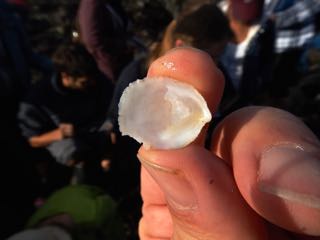
-
| 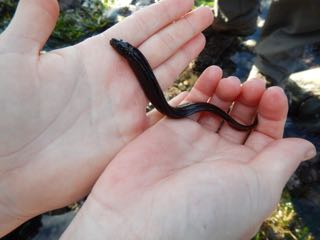
-
| 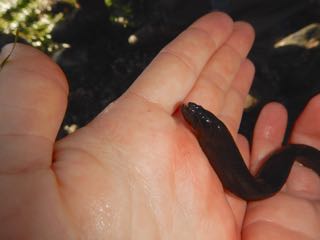
-
|
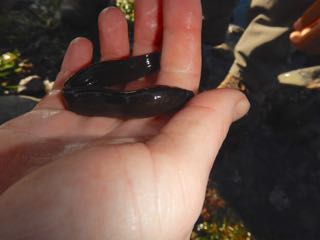
-
| 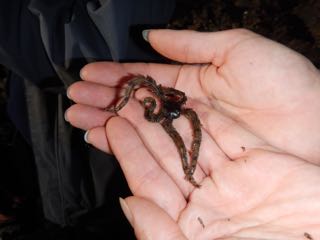
-
| 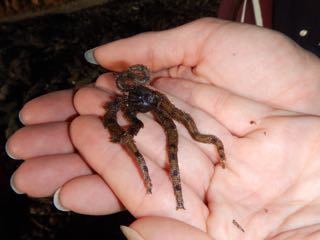
-
|
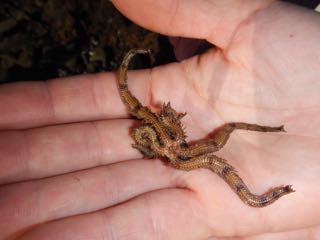
-
| 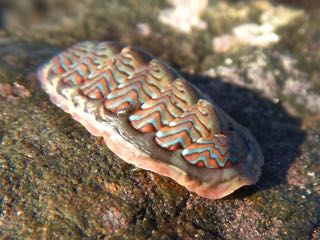
Tonicella lokii
| 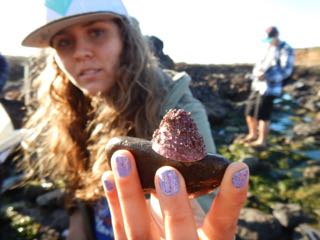
The duncecap limpet, Acmaea mitra, is another grazer that is specialized to feed on encrusting coralline algae,
such as the algae that is living here on its smooth white conical shell.
|
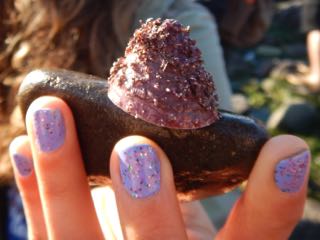
-
| 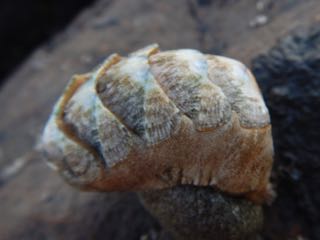
Stenoplax heathiana
| 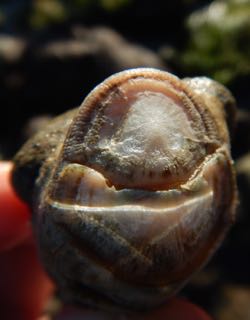
The tail valve of members of the genus, Stenoplax, is more elongate than in related chitons of the family,
Ischnochitonidae. In this case, the dorsal tegmentum layer has been eroded down to the underlying articulamentum layer.
|
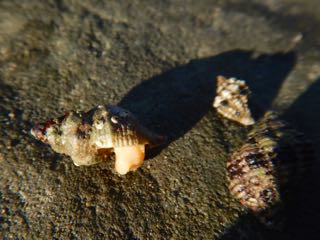
My student, Shawn Wiedrick, is studying West Coast members of the diverse genus currently known as Ocinebrina.
The one on the left is a different species than the two more commonly seen (at this locality) O. circumtexta.
| 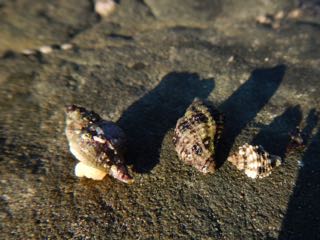
-
| 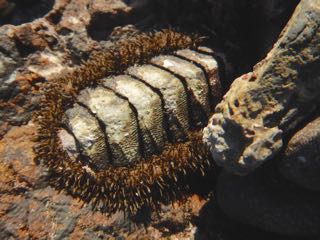
Mopalia muscosa (mossy chiton)
|
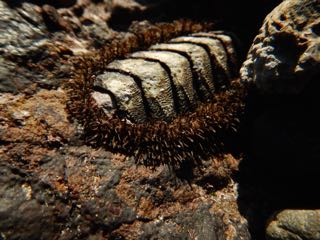
-
| 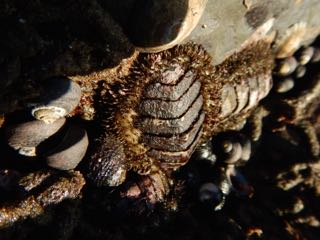
Three more mossy chitons with black teguline snails, Chlorostoma funebralis.
| 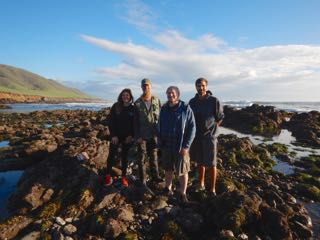
-
|
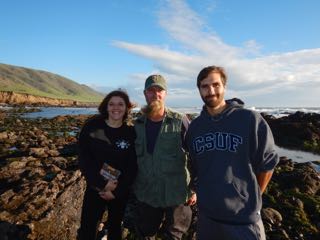
-
| 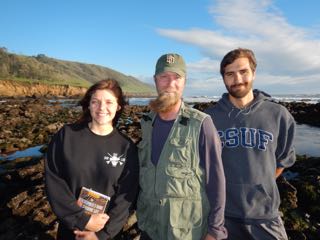
Members of the Eernisse Lab group who were on the field trip to rocky intertidal of the Ken Norris Rancho Marino Reserve in Cambria.
| 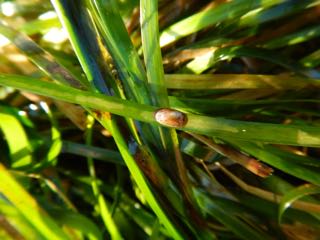
As one can see in this image, the surfgrass limpet, "Lottia" paleacea, grazes the top cell layers of the surfgrass,
in this case, Phyllospadix scouleri. In southern California, a narrower (1 mm not 3 mm wide) species of surfgrass is dominant, P. torreyi,
and the same limpet species grows wafer thin to match the surfgrass blade width. My student, Laney Whitlow, compared the reproductive output of limpets on both
species of surfgrass with most studies done near this Cambria locality.
|
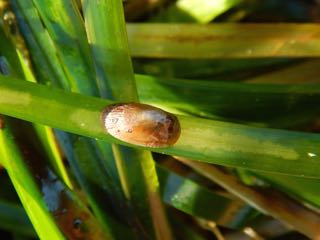
-
| 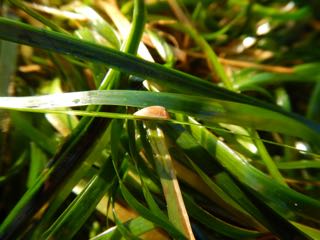
-
| 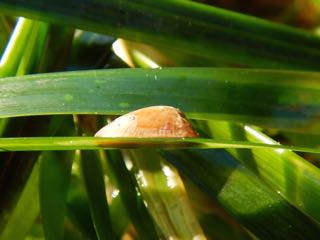
-
|
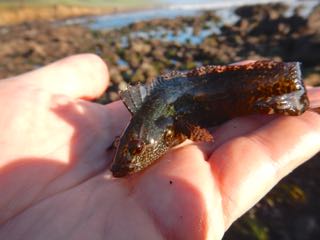
-
| 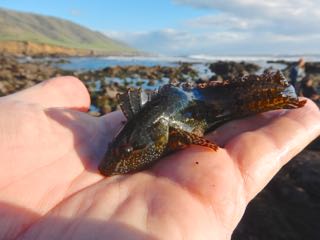
-
| 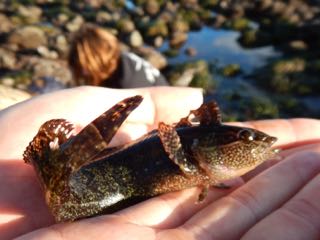
-
|
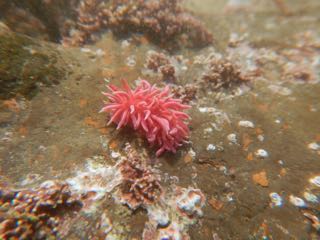
Hopkins rose, Okenia rosacea
| 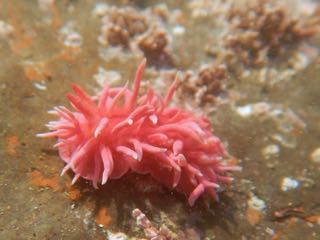
-
| 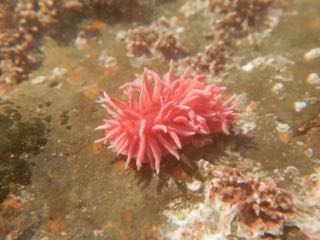
-
|
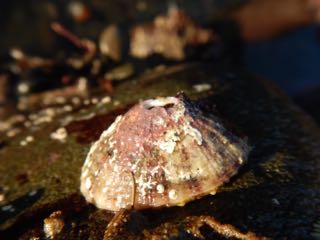
Volcano keyhole limpet, Fissurella volcano
| 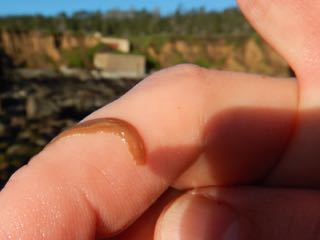
Unidentified polyclad flatworm
| 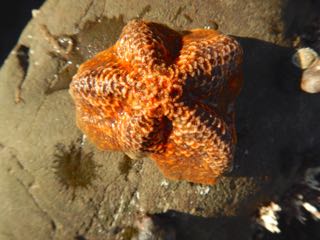
This was the strangest batstar (Patiria miniata) that I have ever seen.
I wondered if it had recovered from wasting disease or a partial predator attack because it was successfully starting to regenerate arms out of its irregular central disk.
|
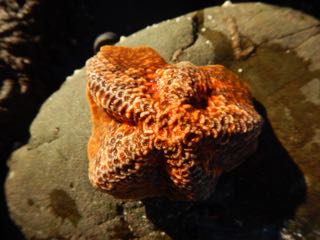
-
| 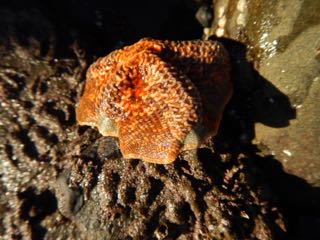
-
| 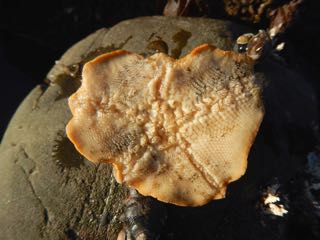
-
|
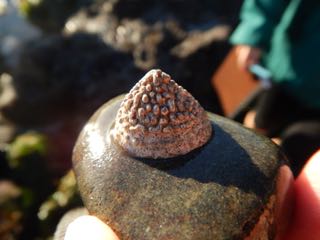
Acmaea mitra is the only member of the limpet family, Acmaeidae,
that is found in the central California intertidal habitat. This one is covered by encrusting coralline algae, but underneath this irregular growth is a smooth white shell.
| 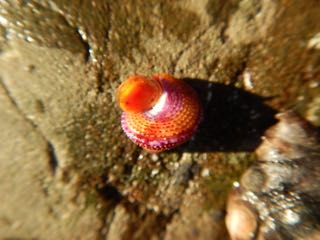
This small Calliostoma annulatum (purple-ring topsnail, blue-ring topsnail or jeweled topsnail),
did not have a perfect shell but it did have a great attitude.
| 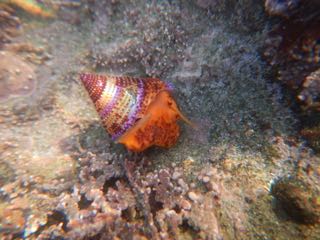
-
|
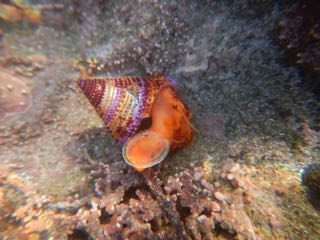
-
| 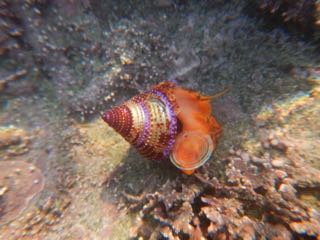
-
| 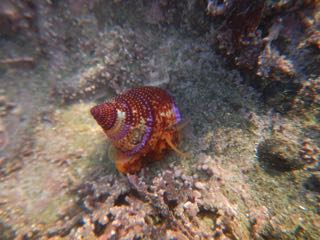
-
|
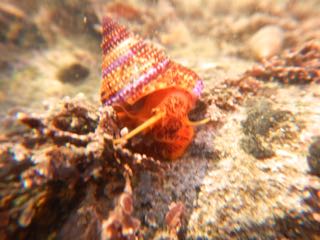
-
| 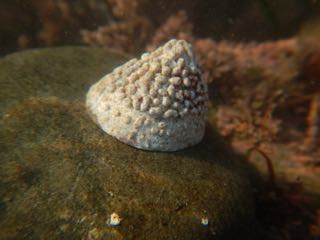
Another coralline alga encrusted Acmaea mitra but in this case the alga has likely been long-dead
and bleached white, with only its calcium carbonate remaining.
| 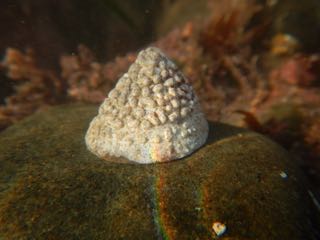
-
|
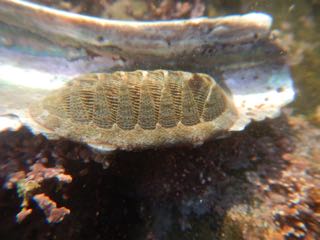
Lepidozona cooperi (Cooper's chiton)
| 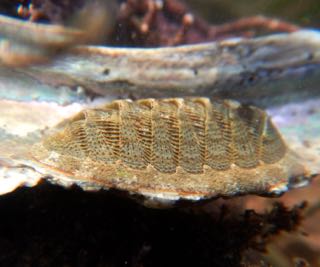
-
| 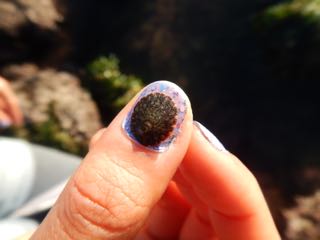
A small rock morph of Lottia instabilis, better known for its saddle-shaped kelp morph, found on the stipes of Laminaria setchelli,
and other shallow subtidal kelps. In fact, the rock morph appears to be so different that it was long time known by a different species name, L. ochracea,
a younger name that is now synonymized with L. instabilis. I was not the first person to notice that the DNA sequences of the rock and kelp morph limpets are the same.
|
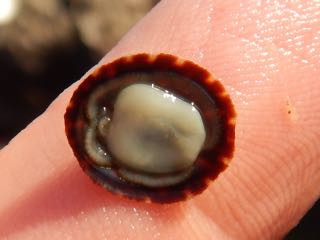
-
| 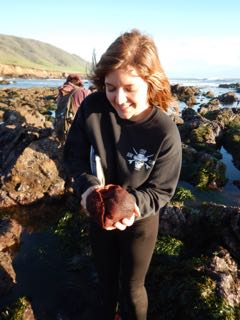
-
| 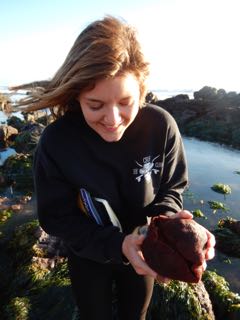
-
|
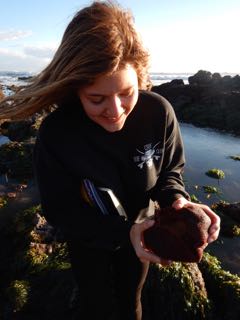
-
| 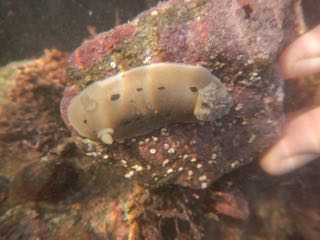
Diaulula sandiegensis
| 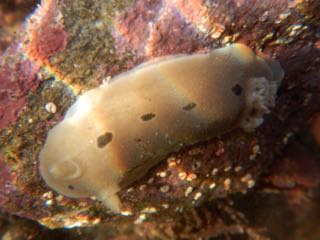
-
|
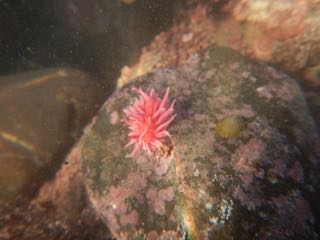
-
| 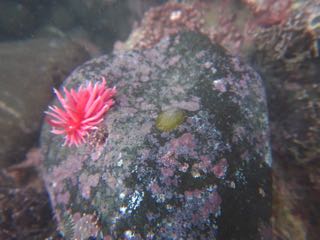
Hopkins rose and I think a green rock morph of the black limpet, Lottia asmi, more normally noticed living on the teguline snail, Chlorostoma funebralis.
| 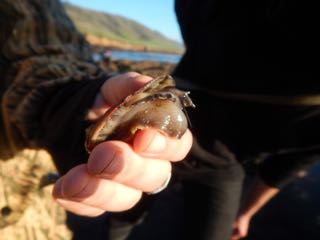
This juvenile red abalone, Haliotis rufescens, was actively twisting in its attempted escape response.
|
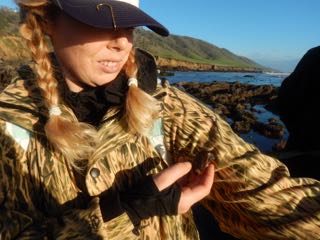
-
| 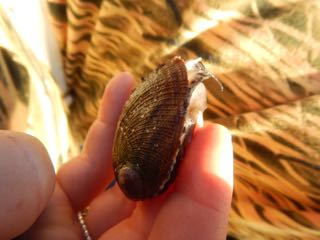
-
| 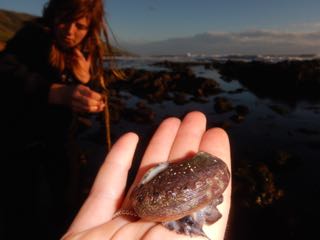
-
|
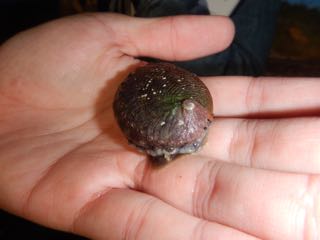
-
| 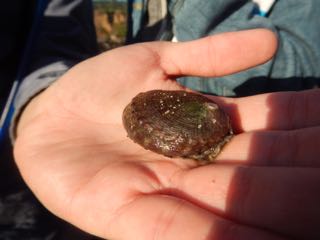
-
| 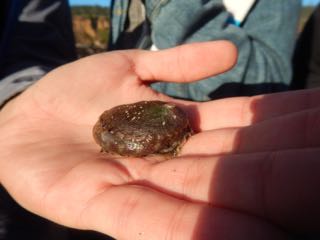
-
|
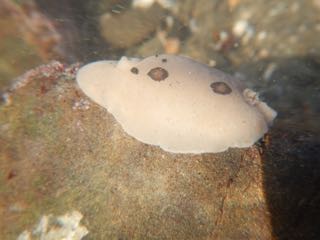
Another Diaulula sandiegensis
| 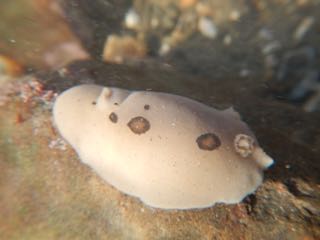
-
| 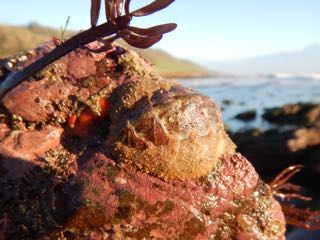
Mopalia ciliata found under a rock.
|
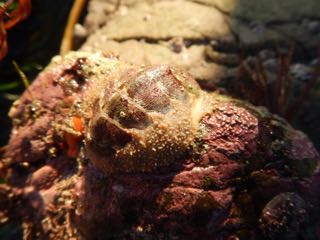
-
| 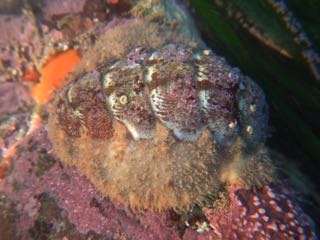
-
| 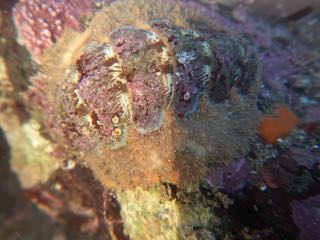
-
|
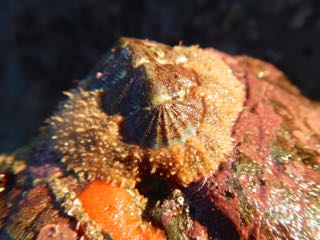
-
| 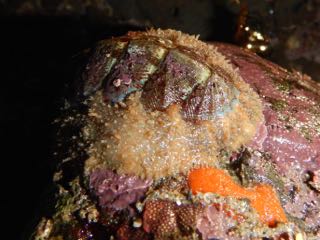
-
| 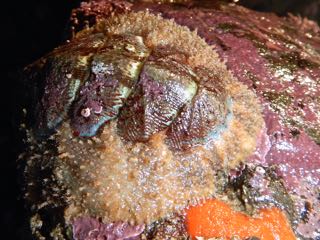
There are about 20 West Coast species of the genus, Mopalia, found on the West Coast,
and most occur within California. They can be distinguished under a microscope by their girdle setae.
|
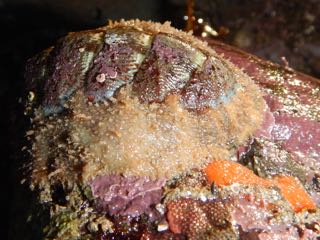
-
| 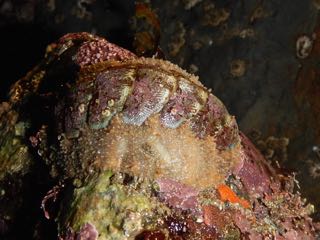
-
| 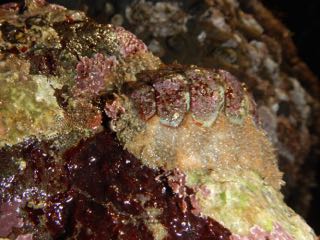
-
|
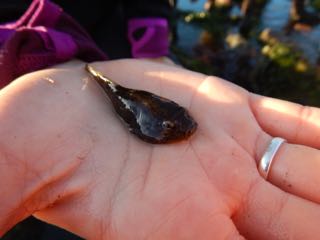
The northern clingfish (Gobiesox maeandricus) is the northernmost clingfish species on the West Coast,
with a range extending to SE Alaska, and only occasionally found in southern California. It and the kelp clingfish are the only clingfish north of Pt. Conception.
| 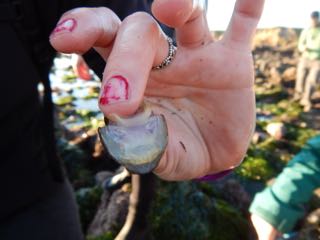
Clingfish have no scales and an adhesive (sucking) disk on their ventral side. They cling to rocks. Northern clingfish are known to prey on limpets.
| 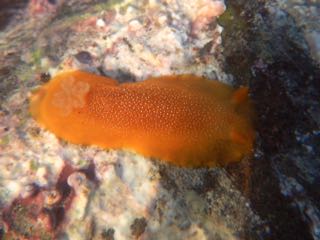
Doriopsilla albopunctata
|
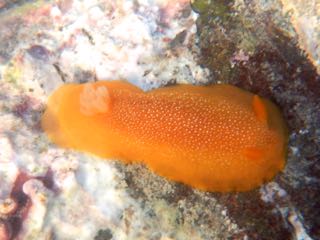
-
| 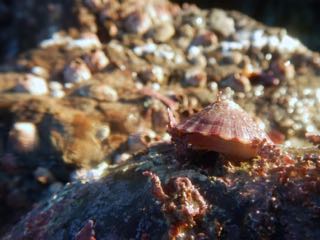
-
| 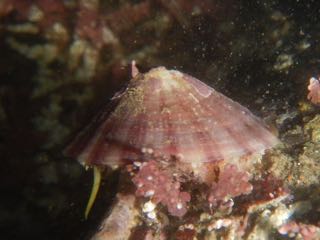
-
|
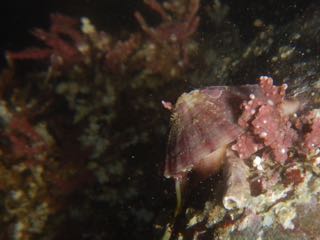
-
| 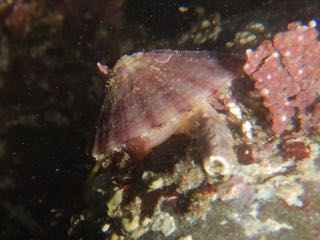
-
| 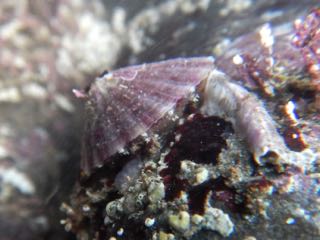
-
|
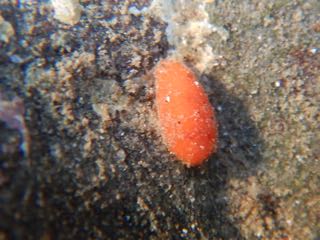
-
| 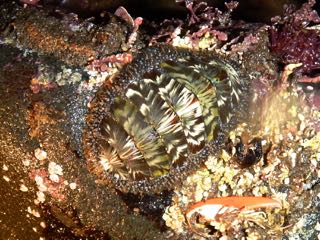
Mopalia lignosa (woody chiton)
| 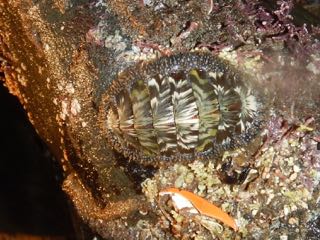
-
|
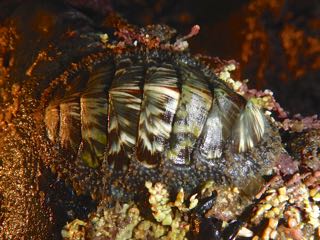
-
| 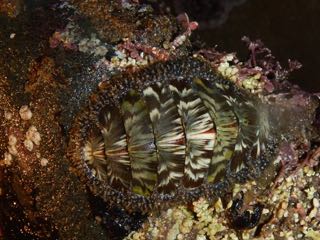
-
| 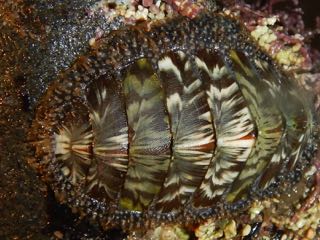
-
|
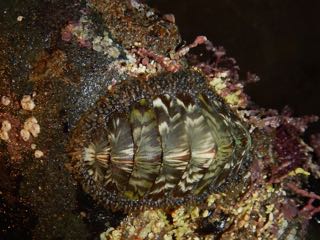
-
| 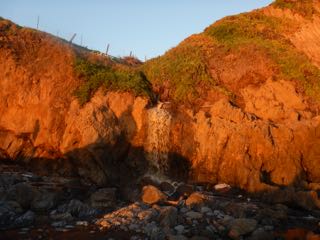
-
| 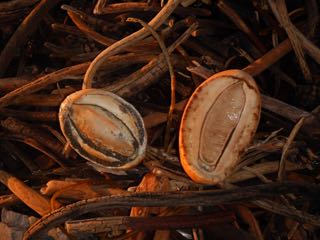
-
|
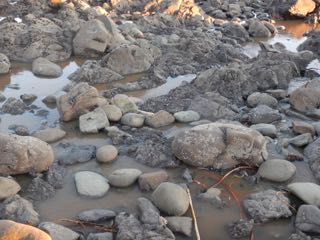
-
| 
-
| 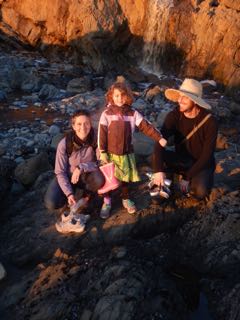
-
|
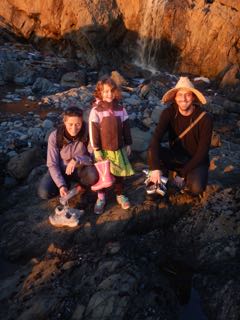
-
| 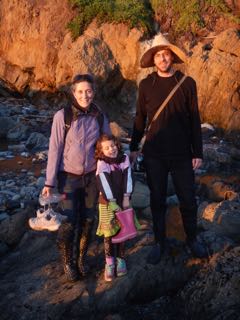
-
| 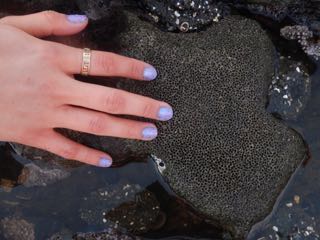
The cirratulid colonial polychaete, Dodecaceria fewkesi, makes large hard mounds in the intertidal.
|
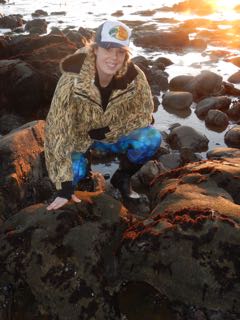
-
| 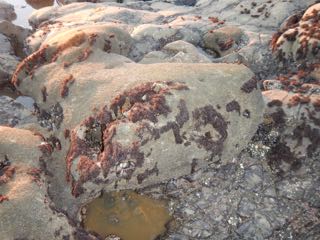
-
| 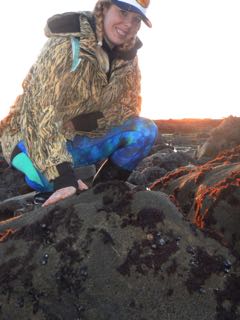
-
|
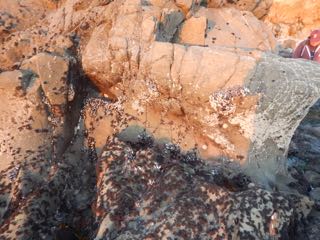
-
| 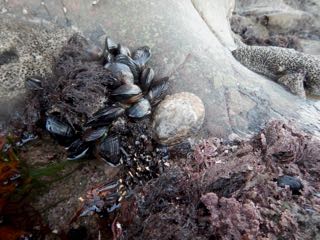
-
| 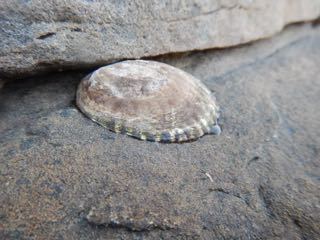
-
|
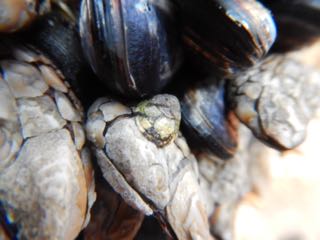
-
| 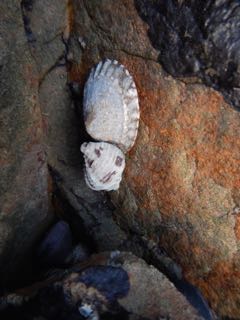
-
| 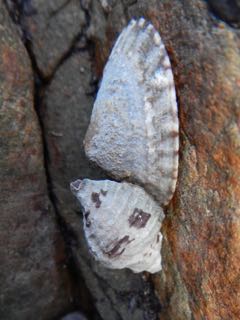
Ocinebrina circumtexta attempting to feed on a Lottia pelta
|
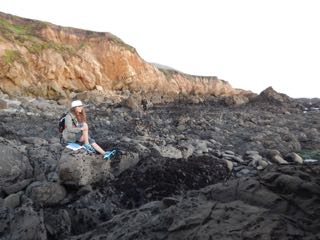
-
| 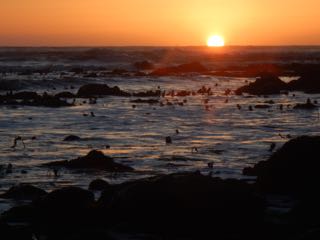
-
| 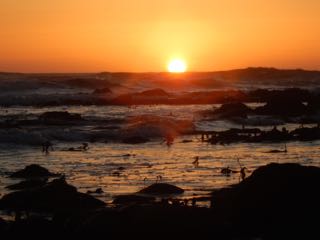
-
|
 Under Construction!
Under Construction! Under Construction!
Under Construction!